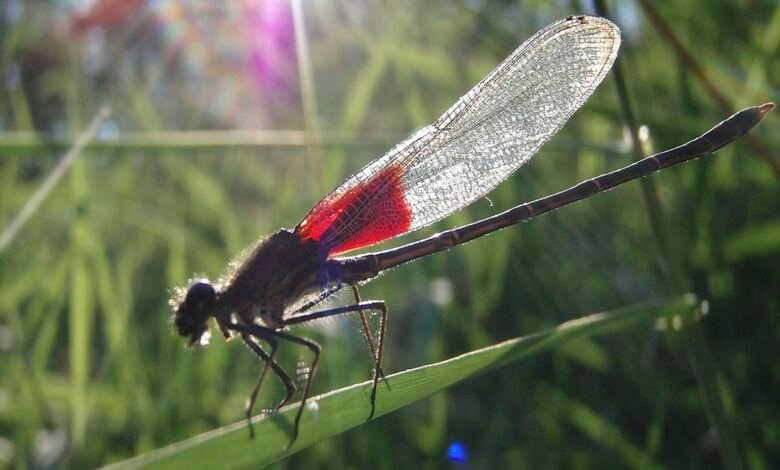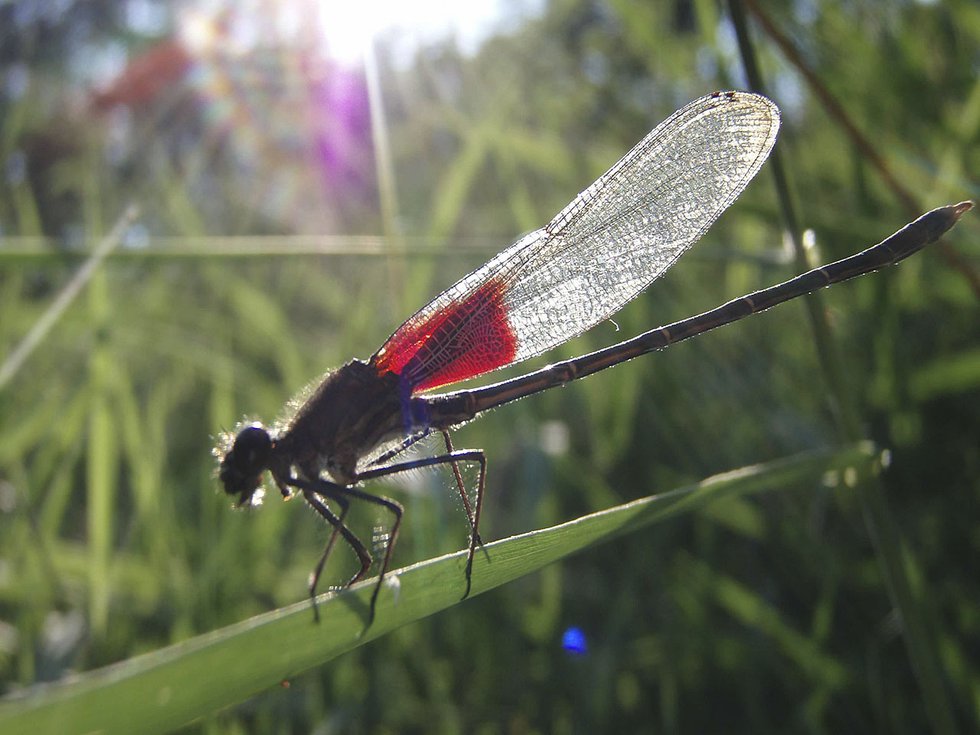Infrequent fliers – Isthmus | Madison, Wisconsin


On June 18, an amateur photographer posted on the Wisconsin Dragonfly Society Facebook page that he had spotted a golden-winged skimmer (Libellula auripennis) in Manitowoc County, specifically near Point Beach.
The kicker is that one had never been documented in Manitowoc County before last month. That doesn’t mean that there hadn’t been any L. auripennis along the lakeshore; it’s just that no one told anyone. They are fairly common to Door County on the Lake Michigan side, but that’s about it in Wisconsin. Until last month.
Wisconsin is well-known for its passionate odonatists, both professional and amateur (like me — my license plate used to read ODON8). The Wisconsin Odonata Survey records thousands of sightings of hundreds of species in Wisconsin, including the 75 species known in Dane County.
I fell in love with odes years ago, after realizing that they are gorgeous and relatively easy to photograph. They are not skittish and a photographer can get in tight with a macro lens. Compared to birding, chasing odes is child’s play.
One of the charming aspects of the odonate community is their kindness and acceptance of young people. Dragonflies are easy to spot, even for young kids, and their morphology never ceases to amaze. A good place to start is Stokes Beginner’s Guide to Dragonflies.
Their life cycle includes a nymph stage that can last two years in some species. Put a dragonfly nymph under a microscope and prepare to be terrified. They have long, retractable jaws that shoot out at lightning speed to grab macroinvertebrates, and sometimes, a minnow or two. They suck water into their anus, pressurize it with their thorax, and direct that pent-up energy to the lower jaw, which explodes outward toward their prey in under 30 milliseconds.
Few know that a water-butt-shooting horror-movie-worthy nymph is the genesis of a graceful, mosquito-munching aerobatic dragonfly. That’s just the start of their magnificence.
Mature dragonflies are apex predators to any flying insect. Dragonflies average a 95% success rate capturing their prey. No other living creature comes close to this. Even more impressive is the method they use, forming their legs into a basket that reminds me of a first baseman’s mitt. Then they transfer their prey to their mouths, and munch on the go.
The best place to find dragonflies is generally near a body of water, as that’s where the nymphs live and emerge. But as the summer passes, you’ll see more dragonflies farther from the water, skimming over prairies and meadows.
If you’re fortunate, you might see nymphs emerging from the water, crawling up to a perching place. Once secure, they split open their exoskeleton and emerge as an adult. It takes a good hour for them to escape their exuvia and stretch their wings enough to fly.
If you want a real treat the next time you’re in Door County, skip the ice cream and head for The Ridges sanctuary in Baileys Harbor. There you’ll find, if you’re patient, the Hine’s emerald, a dragonfly that was thought to be extinct until it was rediscovered in the Mink River Estuary in 1987. They are still endangered, but the Ridges sanctuary provides a protected habitat. The speed limit past The Ridges is 30 miles per hour, a speed at which dragonflies may be able to get out of the way of a moving vehicle. Hine’s emeralds live in only a few places in the upper Midwest: that’s it. The last estimate is that there are fewer than 10,000 left. There are probably 10,000 random insects in my backyard.
If you’re interested in learning more, I suggest the Wisconsin Dragonfly Society. Its Facebook page is very active, with incredible images posted by some professional-grade photographers.



